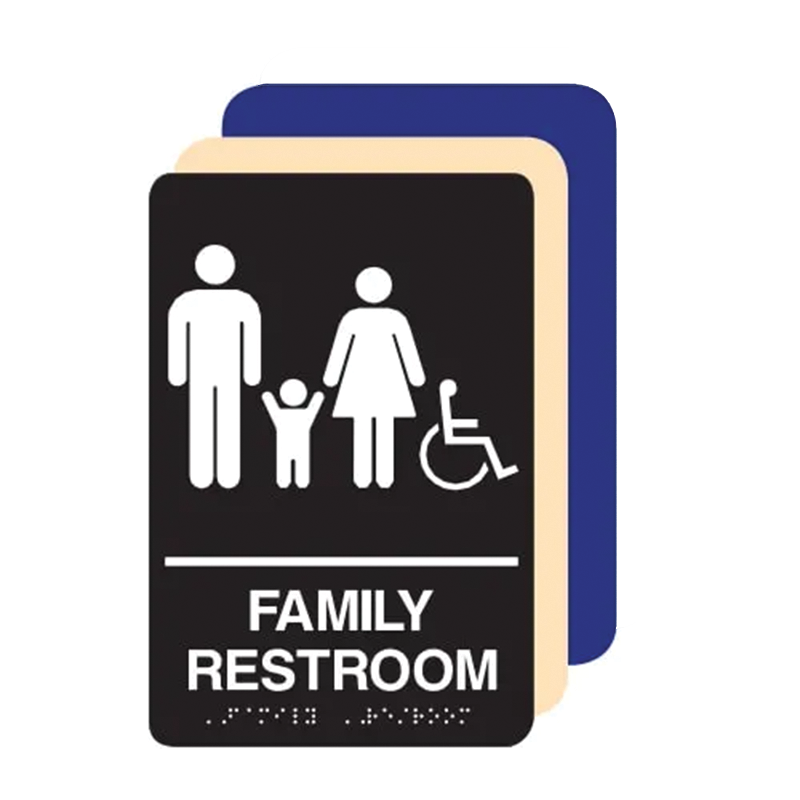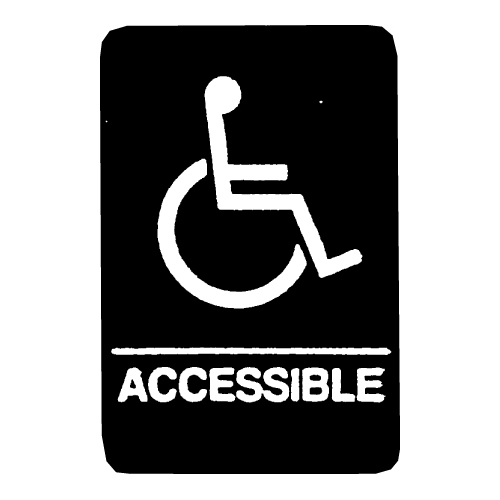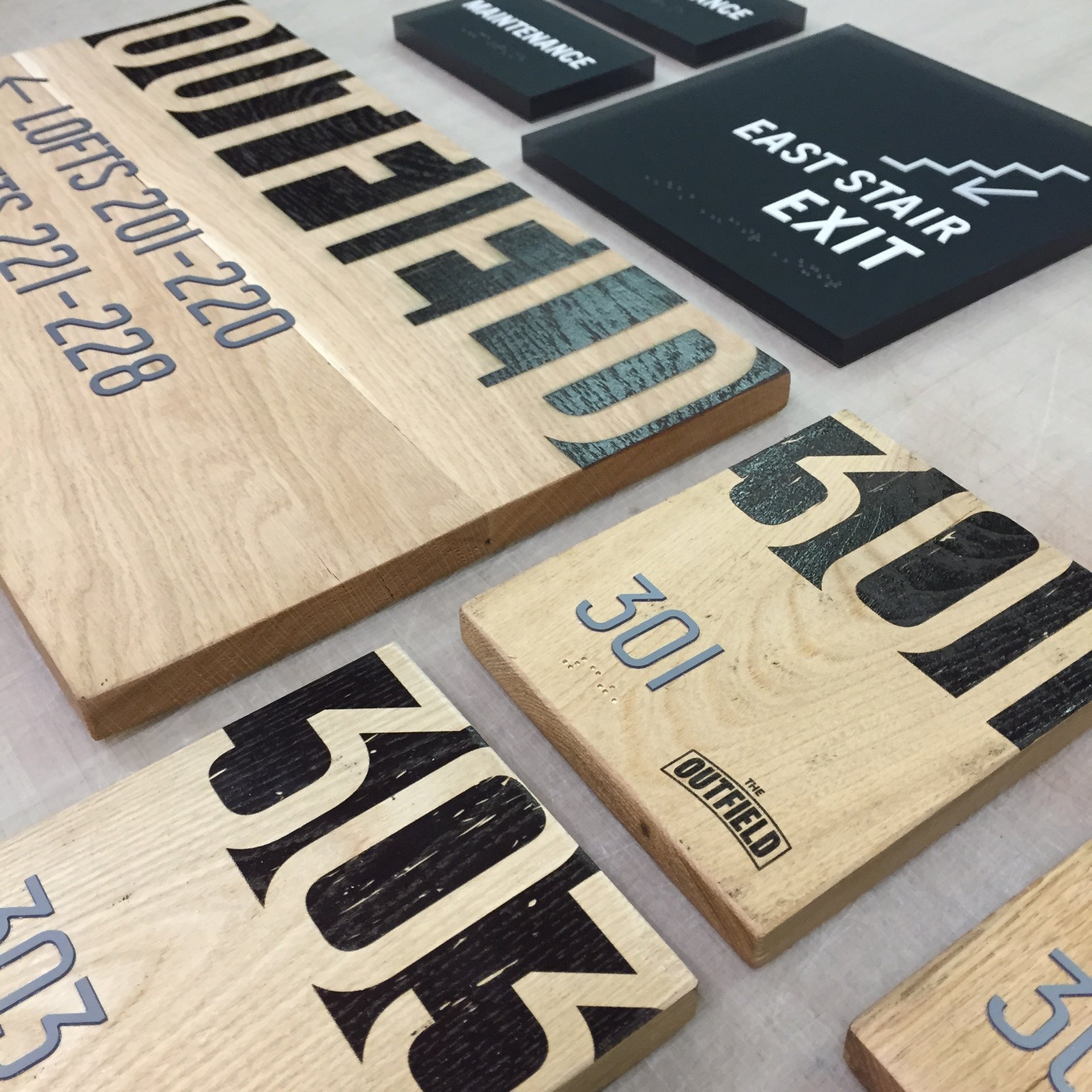Discovering the Trick Attributes of ADA Indications for Enhanced Ease Of Access
In the world of availability, ADA indicators serve as quiet yet effective allies, guaranteeing that rooms are navigable and comprehensive for individuals with specials needs. By incorporating Braille and tactile aspects, these indicators break obstacles for the aesthetically damaged, while high-contrast color plans and legible font styles provide to varied visual requirements.
Value of ADA Conformity
Guaranteeing conformity with the Americans with Disabilities Act (ADA) is crucial for fostering inclusivity and equivalent gain access to in public rooms and workplaces. The ADA, passed in 1990, mandates that all public centers, employers, and transport services fit people with disabilities, guaranteeing they enjoy the same legal rights and chances as others. Conformity with ADA criteria not just meets lawful obligations but likewise enhances an organization's track record by showing its dedication to variety and inclusivity.
Among the vital facets of ADA conformity is the execution of accessible signs. ADA indicators are designed to ensure that people with disabilities can easily browse via structures and rooms. These indications need to adhere to particular guidelines regarding size, typeface, shade comparison, and placement to ensure visibility and readability for all. Properly implemented ADA signs helps remove obstacles that people with impairments frequently encounter, thereby advertising their freedom and confidence (ADA Signs).
Moreover, sticking to ADA guidelines can reduce the threat of possible fines and lawful consequences. Organizations that fail to abide by ADA guidelines might face fines or claims, which can be both financially difficult and damaging to their public image. Therefore, ADA conformity is essential to cultivating an equitable setting for everyone.
Braille and Tactile Aspects
The incorporation of Braille and responsive elements right into ADA signs symbolizes the concepts of accessibility and inclusivity. These functions are crucial for people that are aesthetically damaged or blind, enabling them to navigate public areas with better independence and confidence. Braille, a responsive writing system, is essential in offering created details in a format that can be quickly viewed with touch. It is commonly placed below the equivalent message on signage to guarantee that individuals can access the info without aesthetic assistance.
Tactile aspects extend beyond Braille and consist of elevated signs and characters. These components are made to be noticeable by touch, enabling individuals to identify area numbers, toilets, departures, and other crucial areas. The ADA sets certain standards pertaining to the dimension, spacing, and placement of these responsive aspects to enhance readability and ensure uniformity throughout different settings.

High-Contrast Color Pattern
High-contrast shade schemes play a crucial function in enhancing the exposure and readability of ADA signage for people with visual disabilities. These schemes are vital as they take full advantage of the difference in light reflectance between message and background, making certain that indications are conveniently discernible, also from a distance. The Americans with Disabilities important link Act (ADA) mandates the usage of particular shade contrasts to accommodate those with restricted vision, making it an essential facet of compliance.
The effectiveness of high-contrast shades depends on their capability to stand out in different lights conditions, including poorly lit environments and areas with glow. Generally, dark message on a light history or light text on a dark history is employed to accomplish optimum comparison. Black message on a white or yellow background supplies a raw visual difference that helps in quick acknowledgment and understanding.

Legible Fonts and Text Dimension
When taking into consideration the layout of ADA signs, the selection of readable font styles and proper text size can not be overemphasized. The Americans with Disabilities Act (ADA) mandates that typefaces need to be not italic and sans-serif, oblique, script, extremely ornamental, or of uncommon type.
According to ADA standards, the minimum text elevation should be 5/8 inch, and it needs to enhance proportionally with viewing range. Consistency in i thought about this message size adds to a cohesive aesthetic experience, aiding people in navigating settings effectively.
Additionally, spacing in between letters and lines is integral to legibility. Sufficient spacing stops characters from showing up crowded, boosting readability. By adhering to these criteria, developers can substantially boost ease of access, making certain that signage offers its desired function for all people, no matter their visual capacities.
Reliable Placement Methods
Strategic positioning of ADA signage is necessary for optimizing accessibility and making certain compliance with legal criteria. Properly positioned indications assist people with disabilities efficiently, helping with navigating in public rooms. Trick considerations include height, proximity, and exposure. ADA guidelines state that indications must be installed at a height between 48 to 60 inches from the ground to ensure they are within the line of sight for both standing and seated individuals. This common elevation variety is essential for inclusivity, enabling wheelchair users and people of differing heights to gain access to info effortlessly.
In addition, indications must be positioned nearby to the lock side of doors to permit simple identification before access. Consistency in sign positioning throughout a facility enhances predictability, reducing complication and boosting general user experience.

Final Thought
ADA indicators play a vital duty in advertising access by incorporating attributes that resolve the demands of people with specials needs. These aspects collectively foster a comprehensive setting, emphasizing the relevance of ADA conformity in making sure equal access for all.
In the realm of ease of access, ADA signs serve as quiet yet effective allies, making sure that areas are inclusive and accessible for people with impairments. The ADA, enacted in 1990, mandates that all public centers, companies, and transportation services suit individuals with disabilities, guaranteeing they appreciate the very same legal rights and chances as others. ADA Signs. ADA signs are designed to make certain that individuals with disabilities can conveniently navigate via spaces and structures. ADA guidelines stipulate that indicators internet ought to be mounted at an elevation between 48 to 60 inches from the ground to guarantee they are within the line of sight for both standing and seated people.ADA indications play a vital function in promoting availability by integrating attributes that deal with the needs of people with disabilities